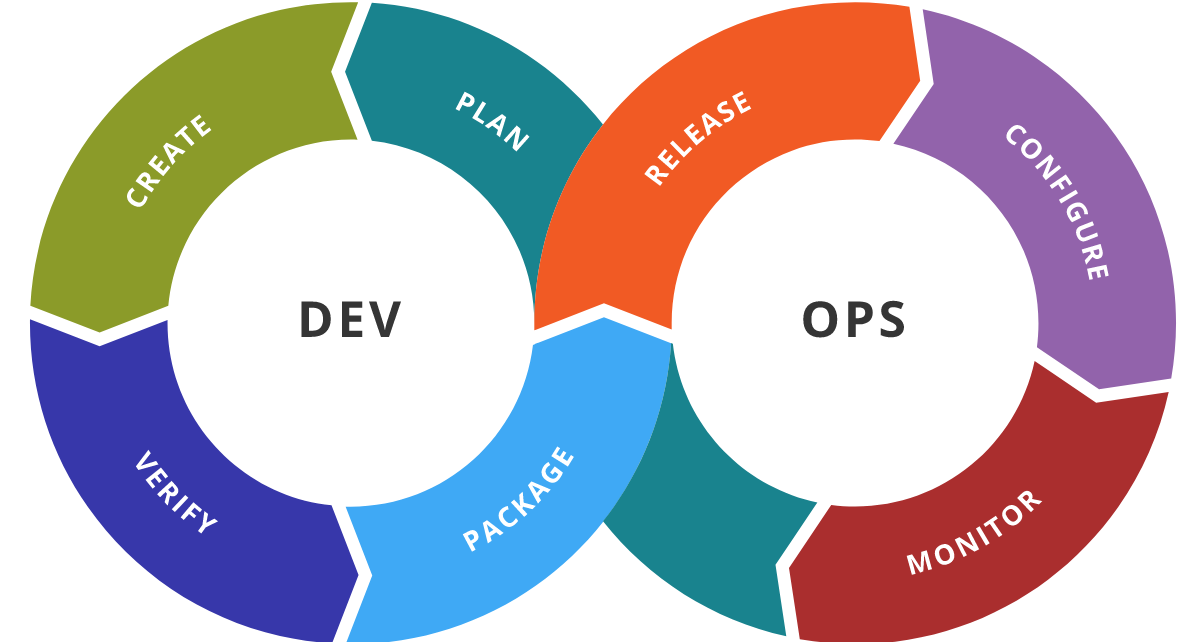![]()
Cybersecurity is an important matter for any organization. It secures business data from hackers, viruses, malware, and other threats. The DevSecOps approach helps organizations to bridge the gap between development and cybersecurity. Engineers can now work on and prioritize cybersecurity issues while developing software. This enhances the overall security of the system.
In this article, we’ll talk more about DevSecOps and its relevance in cybersecurity.
What Is DevSecOps?
To understand DevSecOps, we first have to look at DevOps. DevOps is a methodology used by companies to improve their software delivery process. It focuses on improving collaboration among different teams, such as developers, operations, and IT. The main goal of DevOps is to accelerate the process of app production.
DevOps also aims to increase efficiency by integrating continuity and consistency across all stages of the software development life cycle (SDLC). In other words, it combines continuous integration (CI) and continuous deployment (CD).
Now, DevSecOps integrates security into the DevOps cycle. Unlike DevOps, this approach incorporates security during the entire software development life cycle. Security experts are involved throughout the entire process. It’s not a stage that’s isolated to a specific team in the final stage of development.
Relevance of DevSecOps in Cybersecurity
DevSecOps and cybersecurity are two very closely related concepts. You can think of cybersecurity as a part of DevSecOps. However, cybersecurity is a huge domain, so you shouldn’t think that DevSecOps and cybersecurity are the same.
Different practices in DevSecOps relate to cybersecurity. Engineers involved in the SDLC need to implement these practices to ensure that the application they’re building is secure.
Here are some DevSecOps practices that highlight the relationship to cybersecurity:
1. Security is built-in into the SDLC.
Unlike traditional approaches where engineers considered security after the coding phase, DevSecOps considers security as a critical element of the SDLC. So, every step of the SDLC needs to be examined for potential risks.
DevSecOps engineers keep track of vulnerabilities and threats throughout the SDLC. They use tools like vulnerability scanners and runtime protection to identify possible threats.
2. Continuous Integration/Continuous Deployment (CI/CD) is used to build applications.
CI/CD is a practice that enables continuous integration and deployment of code. This means that the code gets tested continuously. Any bugs discovered are fixed immediately. CI/CD reduces the time taken to fix errors and increases the quality of the application.
This practice allows engineers to prioritize cybersecurity measures during development. For example, if your application has a known vulnerability, it’s fixed during the development phase.
3. Automation is used to deploy applications.
Automation is another key aspect of DevSecOps, and it’s important because automation makes things easier. Automated processes reduce human error and help speed up deployments.
When you automate a deployment process, you don’t need to manually run tests or install dependencies. Instead, you just click a button, and the application gets deployed automatically.
In cybersecurity, automated processes enable you to scan files quickly and detect malicious activity. As a result, engineers can spend more time focusing on their work instead of spending hours hunting for malware.
Other Benefits of DevSecOps for Cybersecurity
DevSecOps allows you to improve the overall security posture of an organization. This is why more organizations are adopting this practice. Here are some other benefits of DevSecOps for cybersecurity:
1. Faster Time to Market
You can get rid of manual testing by automating it using DevSecOps. The faster you can release new versions of the application, the better. With DevSecOps, you can manage all aspects of the SDLC simultaneously. This includes managing security issues along with the rest of the project.
2. Improved Quality at Lower Cost
Because DevSecOps focuses on security from the beginning, it helps ensure high-quality applications. When an application is already out there, fewer vulnerabilities exist.
Additionally, with DevSecOps, you have fewer costs associated with finding and fixing cybersecurity vulnerabilities. This is because you’re not waiting until the end of the SDLC to find them. You’re doing it right from the start.
3. Better Coordination between Development and Operations
DevSecOps encourages collaboration between developers and operations teams. You have one team responsible for everything related to the software lifecycle. By working together, they can share information about the application and collaborate on how to secure it. As a result, you can ensure that the entire team works towards improving the application’s security.
4. Increased Security Awareness
The people who develop and maintain the application will be more aware of potential risks. They’ll know what kind of attacks hackers might use against it. Because they’re involved in the whole process, they won’t miss anything. It will also be easier for them to identify any weaknesses in the application.
The Bottom Line
As we’ve seen, DevSecOps has many benefits for cybersecurity. It’s a practice that more organizations are adopting as cybersecurity becomes a more critical part of operations. Learning about the best practices for DevSecOps is essential if you want your organization to stay safe online.



